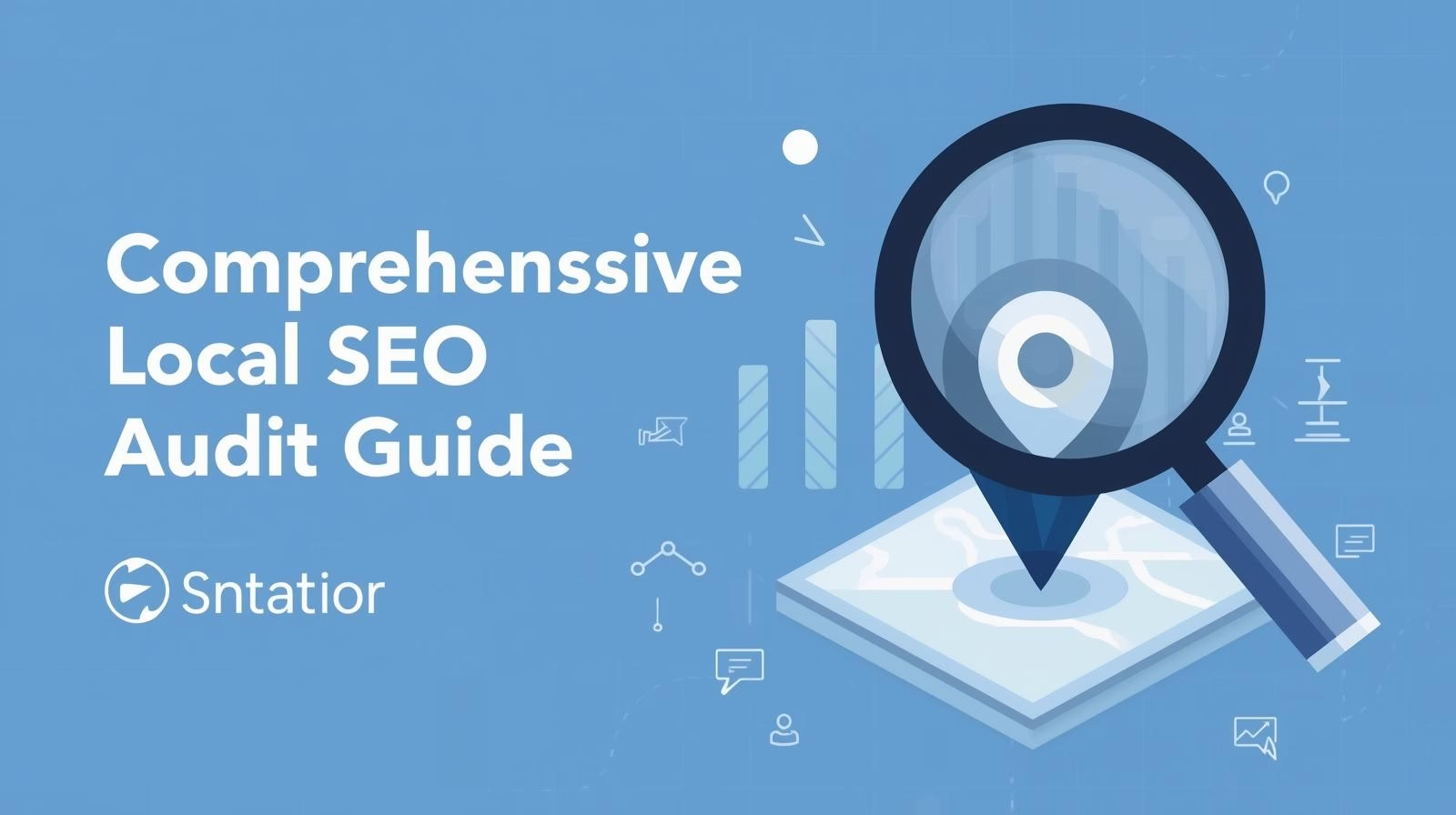Imagine your website humming along, pulling in steady visitors. Then, one day, traffic plummets. You scratch your head, wondering why. Often, the culprit hides in plain sight, technical glitches that search engines hate. A technical SEO audit shines a light on these issues. It helps you fix problems that drag down your rankings and user satisfaction.
In 2023, Google’s updates put even more weight on how sites perform. Think fast load times, easy mobile access, and smooth navigation. These factors decide if your site ranks high or fades away. This guide walks you through the audit process. You’ll get clear steps to boost your site’s visibility and keep users happy.
Why Conduct a Technical SEO Audit?
The Role of Technical SEO in Search Rankings
Technical SEO forms the backbone of your site’s success in search results. It covers things like site speed and clean structure. These send strong signals to Google about your site’s quality. For instance, Core Web Vitals measure how well pages load and respond. They tie directly into your rankings.
Google also looks at E-A-T expertise, authoritativeness, and trustworthiness. A solid technical foundation builds trust. Sites with poor setup often face penalties. Take duplicate content; it confuses crawlers and splits your authority. Regular audits keep you aligned with updates like the Helpful Content one. Check Google’s docs on page experience for more details. Audit every few months to stay ahead.
Common Technical Issues and Their Consequences
Many sites suffer from simple fixes gone wrong. Broken links lead to 404 errors, frustrating users and wasting crawl budget. Slow speeds make people bounce fast, Google notes bounce rates can jump 32% with delays over three seconds. Poor mobile setup? That’s a ranking killer in a phone-first world.
These issues cut traffic and harm your bottom line. A fashion blog might lose sales from laggy pages. E-commerce sites see carts abandoned due to clunky navigation. Spot them early with tools like Google Search Console. It flags errors before they snowball. Fix them to reclaim lost visitors and improve dwell time.
When to Run an Audit
Timing matters for your technical SEO audit. Do one after a big redesign; changes can break links or slow things down. Traffic drops signal trouble too, maybe an update hit you hard. Seasonal shifts, like holiday updates, call for checks as well.
Don’t wait for crises. Schedule audits twice a year. This keeps issues small and manageable. Tie them into your regular SEO work. For example, review after content pushes. This way, your site stays optimized year-round. Proactive steps prevent bigger headaches later.
Preparing for Your Technical SEO Audit
Gathering the Right Tools and Resources
Start with the basics to run a smooth audit. Free options like Google Analytics track user behavior and traffic sources. Google Search Console reveals crawl errors and indexing status. For deeper dives, try Screaming Frog, it’s great for spotting broken links and site structure.
Paid tools add power. Ahrefs Site Audit scans for issues like missing alt text. SEMrush helps with speed and security checks. Set up Screaming Frog by entering your URL and starting a crawl. Limit it to your key pages first. Each tool fits a role: Analytics for big-picture data, Frog for technical nitty-gritty. Baseline your site now to measure progress later.
Setting Audit Goals and Scope
Know what you want before you dive in. For a small blog, focus on speed and mobile checks. E-commerce? Prioritize security and schema for products. Define goals like “cut load time by 20%” to guide your work.
Keep scope tight to avoid burnout. Big sites might take weeks; start with top pages. Use a checklist: crawl errors, vitals, meta tags. This tracks what you’ve done. High-impact fixes, like Core Web Vitals, beat tweaking every title. Efficiency saves time and gets results fast.
Assembling Your Team or Solo Workflow
Solo audits work for small sites. You handle crawls and fixes yourself. Larger teams need roles: developers tweak code, content folks update tags. Assign tasks clearly to speed things up.
Document everything in a Google Sheet. List issues, priorities, and who owns them. For a mid-sized site, plan 10-20 hours total. Break it into days: one for crawling, another for speed tests. This setup keeps you organized. Collaboration turns chaos into clear wins.
Step 1: Crawling and Indexing Analysis
Checking Crawlability and Site Structure
Crawlers need an open path to your content. Start with robots.txt, ensure it doesn’t block key pages. XML sitemaps list your URLs for easy discovery. Clean URL structures, like example.com/blog/post, help too.
Look for barriers: noindex tags hide pages from search. Redirect chains waste time. Follow Google’s crawling guide for tips. Submit your sitemap to Search Console. Watch the coverage report for blocked items. Fix these to let bots roam freely.
Identifying Indexing Issues
Not all pages show in search. Compare indexed count to total pages. Duplicates steal traffic from good content. Use site:yourdomain.com in Google to check.
Canonical tags point to the main version. They solve duplicates without deleting. For crawl budget, analyze server logs. Trim low-value pages like tags. This frees bots for important stuff. Tools like Screaming Frog flag these fast.
Analyzing Internal Linking and Site Architecture
Links pass authority around your site. Check if they form silos, groups of related pages. A flat structure keeps everything one click away. Deep ones organize big sites but risk orphan pages.
Aim for balance: each page links to 3-5 others. Use SEMrush to visualize flows. Pros of flat: easier crawling. Cons: harder navigation on huge sites. Boost depth by adding breadcrumbs. This improves user paths and SEO juice.
Step 2: Performance and Speed Optimization
Evaluating Core Web Vitals
Core Web Vitals gauge real user experience. Largest Contentful Paint (LCP) times main content load, aim under 2.5 seconds. First Input Delay (FID) measures click response; keep it below 100ms. Cumulative Layout Shift (CLS) avoids surprise shifts, targeting under 0.1.
Test with Google’s PageSpeed Insights. It scores mobile and desktop. Compress images to fix LCP. Lazy load off-screen ones. Passing these boosts rankings and keeps visitors.
Site Speed Diagnostics
Bottlenecks hide in code and files. Large images or unminified JS slow you down. Render-blocking resources delay display.
Minify CSS and JS to shrink files. Set browser caching for repeat visits. Test mobile first, Google prioritizes it. Web.dev benchmarks show small sites load in two seconds. Yours should too. Tools pinpoint exact fixes.
Mobile Responsiveness and Usability
Most searches happen on phones. Ensure your design adapts: text readable, buttons tappable. Viewport meta tags control scaling.
Run Google’s Mobile-Friendly Test. It flags issues like small fonts. Fix by resizing elements. Skip AMP now; focus on fast progressive web apps. Add offline support for better engagement. Users stick around on smooth mobile sites.
Step 3: Security, Schema, and On-Page Technical Elements
Implementing HTTPS and Security Best Practices
Security builds trust and ranks. Switch to HTTPS with an SSL certificate. Check for mixed content, HTTP elements on HTTPS pages.
Redirect HTTP to HTTPS in .htaccess. Google’s docs stress this for rankings. For shops, meet PCI rules to protect data. Scan with tools like SSL Labs. Secure sites convert better and avoid penalties.
Adding Structured Data and Schema Markup
Schema helps Google understand your content. Use JSON-LD for FAQs or recipes. It triggers rich snippets like stars in results.
Validate with Google’s Rich Results Test. Fix errors to show up nicely. Schema.org lists types, pick what fits. Benefits? More clicks from eye-catching previews. Start simple: add organization schema to your homepage.
Reviewing Meta Tags, Headers, and Canonicalization
Titles and descriptions draw clicks. Keep titles unique, under 60 characters. H1 headers match main topics. Alt text describes images for accessibility and SEO.
For global sites, use hreflang tags. Robots meta controls indexing. Canonicals fight duplicates. Check with Screaming Frog. Clean tags improve crawl efficiency and user trust.
Step 4: Reporting, Implementation, and Monitoring
Compiling and Prioritizing Findings
Gather all data into one view. Sort issues: critical like broken HTTPS, high like slow vitals, medium for meta tweaks, low for minor links.
Use a template: columns for issue, impact, fix plan. Track before/after metrics. Prioritize by effort vs. reward. Set timelines, fix criticals in a week. This roadmap turns findings into action.
Executing Fixes and Testing
Hand off to devs for code changes. Test each fix: recrawl with tools. Verify in Search Console.
Use IndexNow to push updates to Google fast. Re-test vitals post-change. Iterative steps catch new problems. Document wins to build momentum.
Ongoing Monitoring and Maintenance
Audits aren’t one-offs. Set alerts in Analytics for traffic drops. Search Console emails indexing errors.
Run monthly checks with automated crawls. APIs from Ahrefs help. This sustains gains. Regular tweaks keep your site competitive.
Conclusion
A technical SEO audit uncovers fixes that spark organic growth. You spot hidden drags on performance and rankings. Start with solid prep: tools, goals, team. Follow steps on crawling, speed, security, and more. Prioritize vitals and monitor often.
Key points: Act on triggers like traffic dips. Use free tools for quick wins. Stay consistent for long-term success. Run your first audit today. Grab Search Console and Screaming Frog. Watch your site climb higher.


